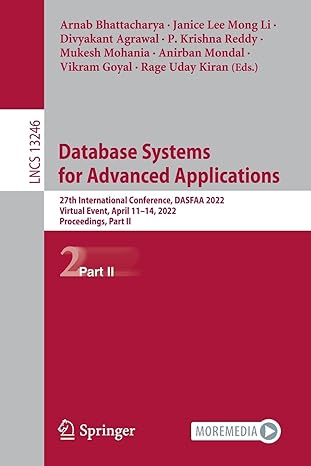Answered step by step
Verified Expert Solution
Question
1 Approved Answer
Suppose we want to use the Heapsort algorithm to sort a large list of numbers. Our first step is to convert the input list to
Suppose we want to use the Heapsort algorithm to sort a large list of numbers.
Our first step is to convert the input list to a heap. Then we run BUILDMAXHEAP, which applies MAXHEAPIFY on the nodes in the heap, starting the last node and moving towards the top. Think about why we do it bottomup instead of topdown.
An example is provided on pg of the textbook. In this example, A The end result of BUILDMAXHEAP is I strongly encourage you to go through this example, step by step.
A total of swaps are made by BUILDMAXHEAP. You can check that the seven swaps occur in this order:
Here is another way to see this: goes down one level, goes down one level, goes down two levels, and goes down three levels. Adding the underlined numbers, we see that the total number of swaps is
Suppose A
Determine BUILDMAXHEAPA and also determine the total number of swaps.
Step by Step Solution
There are 3 Steps involved in it
Step: 1

Get Instant Access to Expert-Tailored Solutions
See step-by-step solutions with expert insights and AI powered tools for academic success
Step: 2

Step: 3

Ace Your Homework with AI
Get the answers you need in no time with our AI-driven, step-by-step assistance
Get Started


